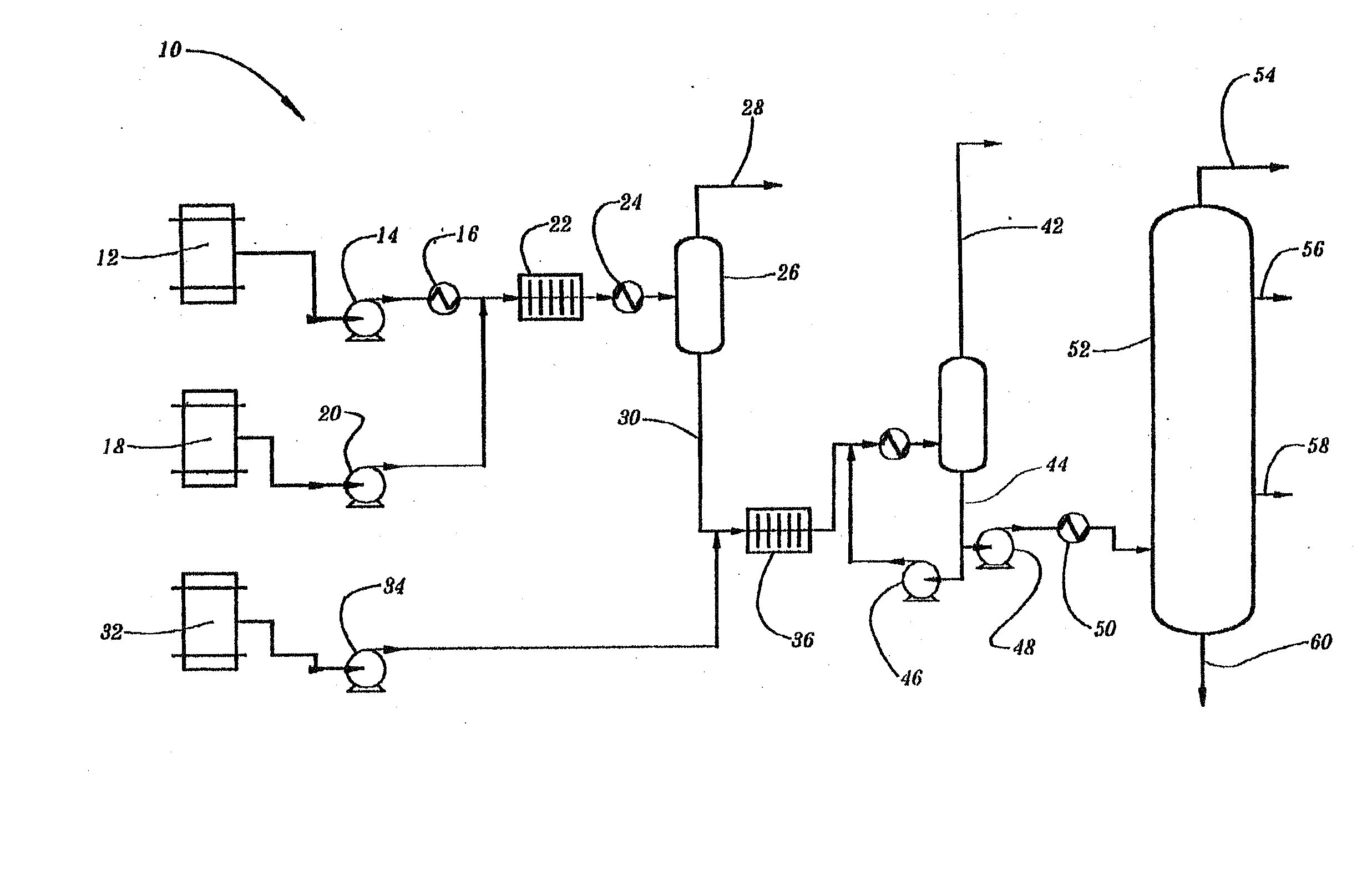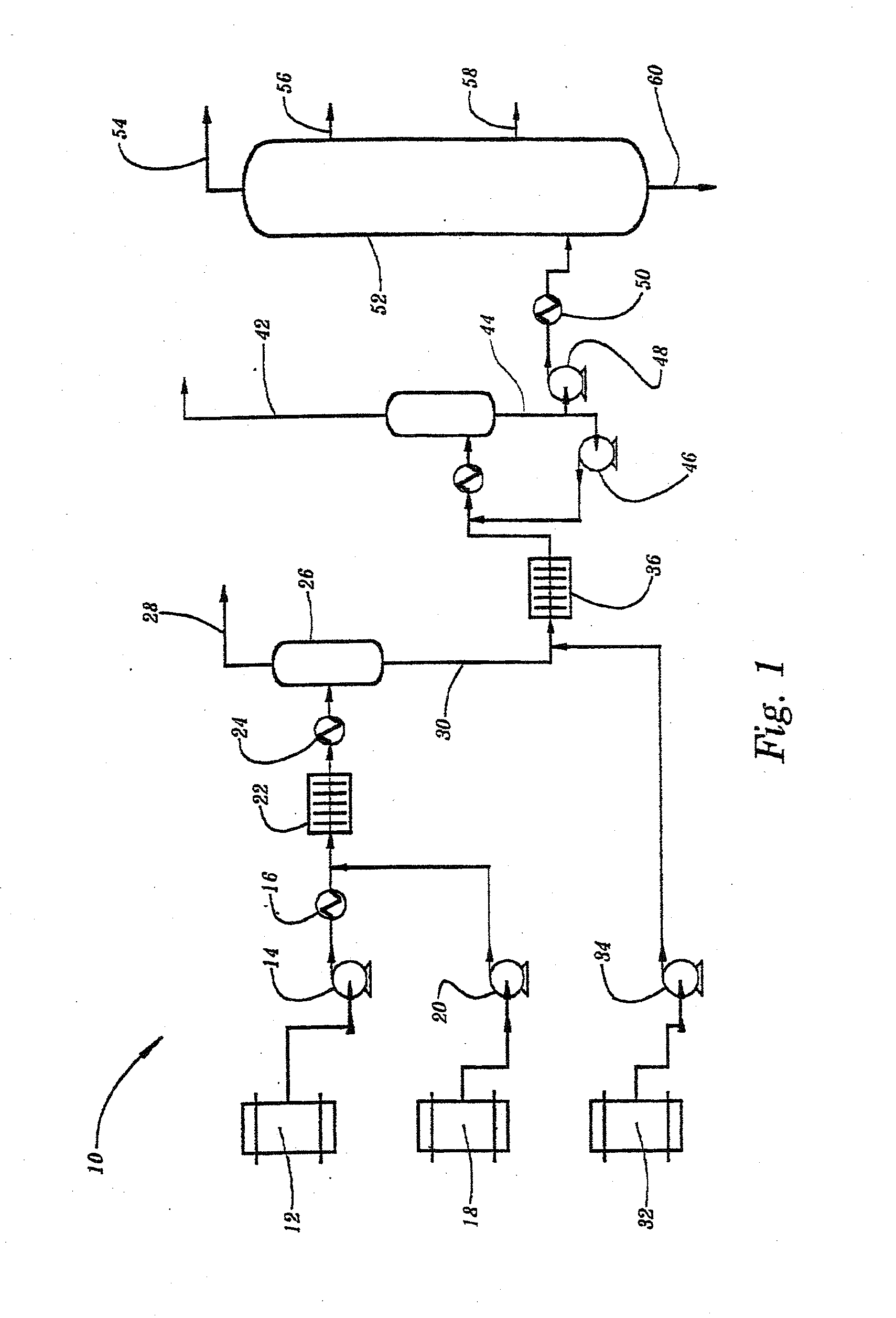Methods of removing contaminants from used oil
a technology of used oil and contaminants, which is applied in the petroleum industry, lubricant compositions, and refining with aqueous alkaline solutions, etc., can solve the problems of large amounts of highly toxic acidic sludge which cannot be disposed of economically, re-refining techniques that do not meet the requirements, and high cost of hydrotreating process
- Summary
- Abstract
- Description
- Claims
- Application Information
AI Technical Summary
Benefits of technology
Problems solved by technology
Method used
Image
Examples
Embodiment Construction
[0012] The process of the present invention removes acidic compounds and color from used motor oil and other petroleum distillates. Additionally, the process removes or substitutes hydrocarbons containing heteroatoms, namely chlorine, boron, phosphorous, sulfur and nitrogen from the used motor oil. In removing these classes of compounds, the process uses inorganic or organic bases to catalyze various reactions and to neutralize organic acids. Further, the process is capable of removing polynuclear aromatic hydrocarbons from used motor oil. In removing these contaminants, the process makes use of a class of catalysts known as phase transfer catalysts, which are employed in the process to facilitate the transfer of inorganic or organic bases to the substrate in the used oil.
[0013] Examples of phase transfer catalysts that may be utilized in the process of the present invention include: quaternary ammonium salts, polyol ethers, glycols, crown ethers, and other catalysts having similar...
PUM
| Property | Measurement | Unit |
|---|---|---|
| pressure | aaaaa | aaaaa |
| temperature | aaaaa | aaaaa |
| pressure | aaaaa | aaaaa |
Abstract
Description
Claims
Application Information
 Login to View More
Login to View More - R&D
- Intellectual Property
- Life Sciences
- Materials
- Tech Scout
- Unparalleled Data Quality
- Higher Quality Content
- 60% Fewer Hallucinations
Browse by: Latest US Patents, China's latest patents, Technical Efficacy Thesaurus, Application Domain, Technology Topic, Popular Technical Reports.
© 2025 PatSnap. All rights reserved.Legal|Privacy policy|Modern Slavery Act Transparency Statement|Sitemap|About US| Contact US: help@patsnap.com


